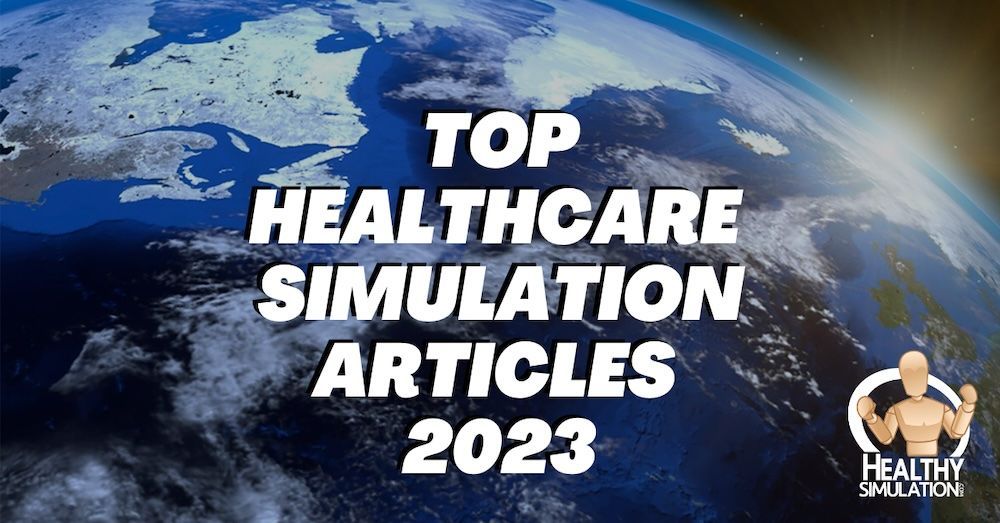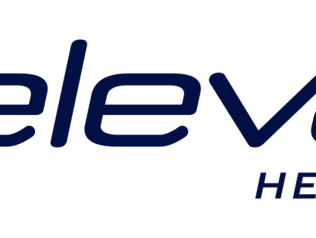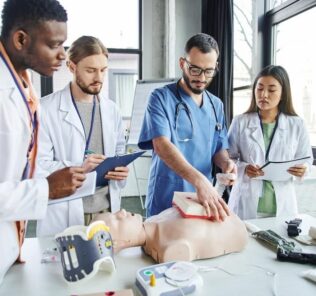Most Read Healthcare Simulation Articles of 2023
In 2023, HealthySimulation.com published hundreds of healthcare simulation articles to help keep simulation educators and learners across the globe informed on the current state of the industry. These clinical simulation articles shared insights, trends, product information, and much more. The ultimate goal is that clinical simulation champions worldwide are able to use this information and strengthen their own understanding of medical simulation, and incorporate what they have learned into their respective clinical simulation programs, curriculums, facilities, etc. This HealthySimulation.com article highlights the top 15 healthcare simulation articles of 2023.
15. How to Become a Healthcare Simulation Program Administrator : A Healthcare Simulation Administrator is responsible for the administration, strategy, management, and leadership of a clinical simulation educational or training program. These professionals manage and oversee all aspects of staffing, create and oversee policies and procedures, liaison between all collaborative stakeholders, support training, educational, and research program development, as well as promote and represent the program. Continuing from HealthySimulation.com’s two previous articles How to Become a Healthcare Simulation Educator and How to Become a Simulation Nurse Educator, we interview Russell D. Metcalfe, FHEA, MSc, NRP, CHSE-A, a Healthcare Simulation Director practicing in Los Angeles at the Cedars-Sinai Women’s Guild Simulation Center about how to become a medical simulation program director.
14. How to Get Started as a Clinical Simulation Debriefer : Debriefing is one of the most important components of healthcare simulation based education sessions. Many of those in the healthcare simulation field will share freely that educators perform a clinical simulation education session in order to debrief. This HealthySimulation article will explore how to start out as a beginner debriefer in clinical simulation. While debriefing can be daunting at first, the insights gained will provide comfort and encouragement to the amateur debriefer.
Sponsored Content:
13. Using ChatGPT For Medical School Curriculum Development : In the ever-evolving landscape of medical education and healthcare simulation, innovative technologies continue to shape how educators teach and students learn. Among these cutting-edge advancements, ChatGPT—an artificial intelligence language model—has emerged as a powerful tool for creating engaging and comprehensive medical school curricula. This HealthySimulation.com article explores the remarkable potential of ChatGPT to revolutionize medical education with specific examples of how the author currently uses the technology in designing medical school curricula. There will be a focus on the ability of ChatGPT in the development of learning objectives, assistance with PowerPoint presentation design, simplification of complex concepts for specific learner levels, design of medical simulation cases, curriculum mapping, and the establishment of protocols and procedures. There will also be a discussion of some of the pitfalls of using generative AI models like ChatGPT and a look ahead to where this technology is taking medical education.
12. TacMed Solutions Launches Female Trauma Patient Simulator MATTi : Tactical Medical Solutions (TMS) is introducing a paradigm shift in the medical simulation industry with the launch of a new female healthcare simulation trauma manikin named MATTI . MATTI has been literally designed to “break the mold”, being specifically developed for trauma but can be de-traumatized to be used in nontraumatic clinical settings. Developing realistic manikins for training and procedures has been a central component of modern medical simulation. Surprisingly, the first full body training manikin, “Mrs. Chase”, appeared in 1911, designed by doll maker, Martha Jenkins Chase, for the Hartford Hospital Nurse Training Program. In the late 1960s, the University of Southern California took the next major step in whole-body manikin development with its phenotypically male Sim One, a precursor of today’s high-fidelity human patient simulators. Since then, the predominance of clinical simulation trainers had a male appearance. In 2001, Laerdal launched Sim Man and in 2014, CAE now known as Elevate Healthcare launched Lucina, the first modern female high-fidelity whole-body trainer for maternal fetal clinical simulation. For a large portion of this development, trauma simulation was limited to task trainers, low fidelity manikins and using moulage on actors. In this HealthySimulation.com article written by Daniel Irizarry, MD will review the birth of the modern female patient simulators and introduce MATTi.
11. Uses of Simulation Educator Needs Assessment Tool (SENAT) : Healthcare simulation educators play an important role in the training of medical learners. To be able to effectively provide instruction, these clinical simulation professionals must continually work to increase their own professional development. The website Evaluating Healthcare Simulation, created to provide healthcare simulation educators and researchers with freely available instruments (tools), shared more information about one such professional development resource – the Simulation Educator Needs Assessment Tool (SENAT). This HealthySimulation.com article discusses how the SENAT is designed for Simulation Educators to self-assess their needs in Simulation Professional Development.
10. 2023 Update: Using Nursing Simulation to Replace Prelicensure Clinical Hours by U.S. State : The nursing profession continues their trajectory with the acceptance of clinical simulation as a substitute traditional clinical experiences. In 2014 the National Council of State Boards of Nursing (NCSBN) National Simulation Study published a landmark longitudinal, randomized, controlled multi-site study of simulation use in prelicensure nursing programs throughout the United States. The results from the NCSBN National Simulation Study revealed that high-quality simulation conducted by trained, dedicated simulation faculty could replace up to 50% of the traditional clinical hours for prelicensure nursing students without negative impact. This HealthySimulation.com article by Dr. Teresa Gore, past president of INACSL, will provide an update and the status of the US states regarding simulation use for clinical hours.
Sponsored Content:
9. How to Build a Clinical Simulation Curriculum : The structure of a clinical simulation program and curriculum are incredibly important elements to a successful clinical simulation program. A well-designed curriculum utilized in the clinical education setting includes the subjects planned to be taught within a clinical simulation program. Common language utilization is a key to success when designing a clinical simulation based education program. This Healthysimulation.com article will focus on curriculum development for a simulation center or program.
8. The Observational Structured Assessment of Debriefing Tool : The practice of debriefing is extremely important across healthcare simulation to ensure that learners have the opportunity to re-examine their work. As clinical simulation serves as a way for learners to gain first-hand experience without posing risk to real-life patients, the ability to learn from their mistakes is integral to successful outcomes. To help learners better identify gaps in their performance and strategies for improvement, the Imperial College London’s NIHR Patient Safety Translational Research Center developed the Objective Structured Assessment for Debriefing tool (OSAD). This HealthySimulation.com article shares more about the tool and the importance of healthcare simulation debriefing, especially in surgery.
7. Hawaii Hosts SimHuddle 2023 Healthcare Simulation Conference this October : The California Simulation Alliance, the Hawai’i State Simulation Collaborative, and the Victorian Simulation Alliance are proud to convene their Inaugural Transpacific Simulation Alliance Event, SimHuddle 2023 . This healthcare simulation conference will be held at the Alohilani Resort Waikiki Beach in Honolulu, Hawaii from October 17-20, 2023. The conference has multiple events including the Writing Retreat, the Pre-Conference Workshops and the main event SimHuddle Conference. HealthySimulation.com is proud to support the first of many SimHuddle Hawaii healthcare simulation conferences with more details below.
6. Lifecast Body Simulation and Echo Healthcare Release World’s First Child Manikin with Down Syndrome : A paradigm shift in the way healthcare education and training is being delivered and one that is absolutely necessary has been approached – the advancement of diversity, equality, and inclusion principles across the continuum of healthcare education. The field of healthcare continues to see this within medical simulation with more diverse training manikins being offered in different ethnicities, ages, and skin tones, Armed Forces training on female simulators, bariatric, transitioning manikins, and now a child with Down Syndrome manikin being offered. As such, this HealthySimulation.com article highlights the release of Gwen, the world’s first child with Down Syndrome training manikin, by Lifecast Body Simulation Global, Echo Healthcare’s Florida-based division of Lifecast Body Simulation.
5. 10 Commandments for the Medical Simulation Novice Debriefer : Debriefing in medical simulation has been a hot topic of discussion for years. There has been literature published to help relay to simulationists that a huge portion of the healthcare simulation learning experience is derived from debriefing. However, not all novice simulationists understand how to begin this process. This HealthySimulation.com article shares 10 basic guidelines to help learners on their journeys to becoming the debriefer that their simulation center and learners need.
4. How to Become a Simulation Nurse Educator : Healthcare simulation nurse educator jobs are excellent opportunities to grow a career, however, are at times hard to find. Use of manikins is only a small part of being a simulation nurse educator. A career as a clinical simulation nurse educator can be a pivotal and life changing role for those passionate about healthcare simulation. This HealthySimulation.com article by Erin Carn-Bennett will explore how one can set oneself up for success in putting the best foot forward when seeking employment as a healthcare simulation educator.
3. How to Handle a “Difficult” Participant in Healthcare Simulation : Occasionally, as a healthcare simulation facilitator, a “difficult” or disruptive participant may be present in a clinical simulation scenario or course. A key question for new clinical simulation debriefers is how to manage this situation professionally and effectively. Important to consider is that one terrible experience for a learner when first engaging with medical simulation training may be extremely difficult to overcome later on, and so careful consideration on this topic should be encouraged to clinical faculty early in the adoption of the adult learning methodology. This article by Erin Carn-Bennett, MSN, RN, will explore the thoughts behind why a participant may display “difficult” behavior in a healthcare simulation and considerations for the management of the situation.
2. ChatGPT and Other Generative AI Considerations for Healthcare Simulation : ChatGPT and other generative AI tools have serious potential to impact Healthcare Simulation. Recently the headlines have been touting some advances in generative Artificial Intelligence (AI), ChatGPT and Bard, which are two competing brands of this technology. For those less familiar, ChatGPT and Bard are AI chatbots. ChatGPT is created by Open AI and Bard is Google’s equivalent. ChatGPT has been out since November of 2022, while Bard was just released in March 2023. Already these technological wonders are making headlines and quickly ‘learning’ and changing; ChatGPT 4 has just launched. With this version, the developers tested its ability to take standardized tests (the SAT, a number of AP history exams, the BAR, and several others); spoiler alert ChatGPT did pretty darn well on these exams, better than 85% of humans in some cases. AI’s performance on these exams leads one to wonder how ChatGPT would perform on the CHSE or CHSOS exams? This HealthySimulation.com article by Dr. Jill Sanko will explore ChatGPT in the context of healthcare simulation. (Editor’s Note: Are you utilizing ChatGPT or other AI systems in interesting ways with Healthcare Simulation? Email us, we want to know!)
1. CAE Announces Sale of CAE Healthcare to Madison Industries for C$311 Million : Today, CAE (Elevate Healthcare)announced the sale of its CAE Healthcare division to Madison Industries for C$311 Million (US $227.2 Million), with the transaction expected to close at the end of fiscal 2024. As one of the leading healthcare simulation manufacturers in the global industry, this is huge news for healthcare simulation champions around the world. Marc Parent, President and CEO of CAE shared that “we believe Madison Industries is well positioned to support the future growth of the Healthcare business, which will continue to focus on evolving simulation to drive patient safety and quality outcomes”.
Looking for more “best of” medical simulation content?
Check out our 2022 Top Articles!
Sponsored Content:

















